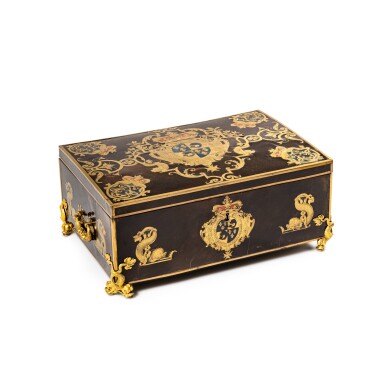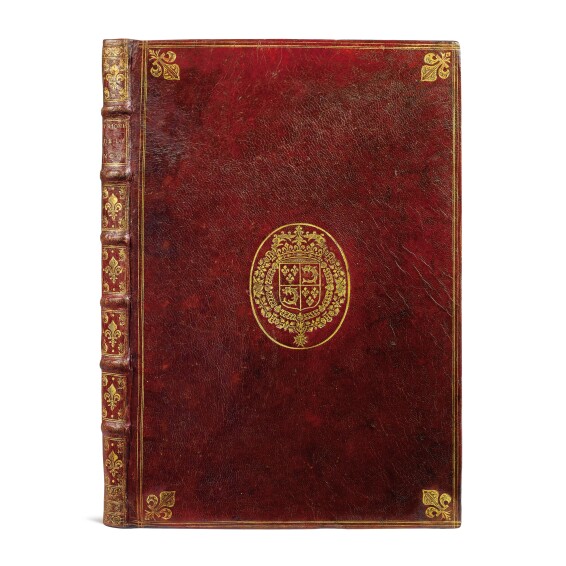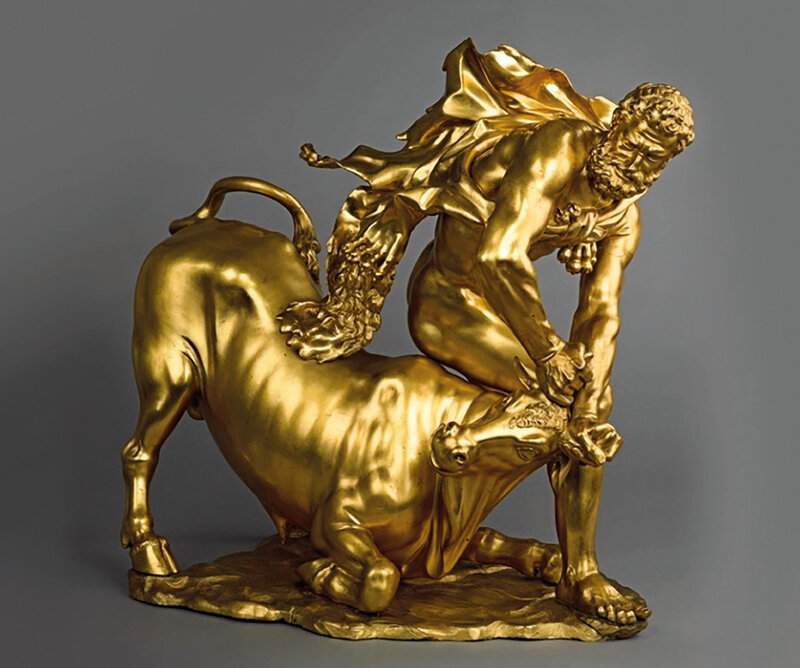Louis de Bourbon, sole surviving child of Louis XIV and Marie Thérèse was a superb collector. His private collection counted hundreds of absolutely exquisite objets d'art - his taste was impeccable and as the heir to the throne, he could expect the best of the best.
Sold by Sothesby's, this cask is attributed to Alexandre-Jean Oppenordt and date back to about 1690. Note the crowned dolphins on the sides alongside the coat-of-arms of the dauphin - these makes it almost certainly specifically made for the Grand Dauphin. Numerous L's further point to the provenance of Louis - although that particular name was hardly unusual.
The dark wood is inlaid with a variety of brass, horn and tortoiseshell. The materials were quite popular with Oppenordt who used them for several other projects.

Two years after moving permanently to Versailles, the Grand Dauphin had these two pedestals delivered to his apartment in the growing palace. Created by the famed master André-Charles Boulle, the style is quite similar to the casket above: dark background with tortoiseshell, horn, brass and gilded bronze. They further appear from the inventory of the crown prince's apartment in 1689.
These pedestals were intended to carry a collection of large bronzes gifted to Louis by his father, Louis XIV. After his death in 1711, these bronzes were made part of the royal collection. As such, they were moved to various other royal residences over the years, including those of Choisy and Meudon. They were even mentioned in the royal inventory of 1775.

A pair of flintlock pistols dated to 1688 and made by Bertrand Piraube who was a popular gunmaker for the king. Made from dark walnut wood inlaid with silver scrollwork, the pistols are adorned with the fleur-de-lys of France as well as the royal heir's personal coat-of-arms. When observed from above, the head of the war-god Mars can be seen.

This book contains the ballet "Le Triomphe de l'Amour" by Jean-Baptiste Lully who worked for Louis XIV. That very ballet was performed for the wedding between the Grand Dauphin and Marie Anne Christine Victoire of Bavaria in 1680 - this book was published the following year by Christophe Ballard.
Bound in red, Moroccan leather, the book is stamped with the Grand Dauphin's personal coat-of-arms with each corner adorned by a golden fleur-de-lys. The book's spine is decorated with both these French lilies and the dolphins symbolising the dauphin himself.

Gifted to the Grand Dauphin in 1681 by his royal father, Louis XIV, this bronze depicts Hecules Overcoming Achelöus by Tacca. It dates back to about 1640. This happened to be one figure amongst a collection which counted four more; the remaining three were also a part of the gift. After the Grand Dauphin's death in 1711, they were reabsorbed into the royal collection where they remained until the revolution.

Another figure which belonged to the Grand Dauphin was this version of the Rape of a Sabine which has been attributed to the Italian Antonio Susini. It was produced in Florence between 1590-1610 and appear in the inventory of the Grand Dauphin's collection at Versailles in 1689. From then, it appear again in the inventory of the Garde Meuble (royal furniture) of 1738.


No comments:
Post a Comment